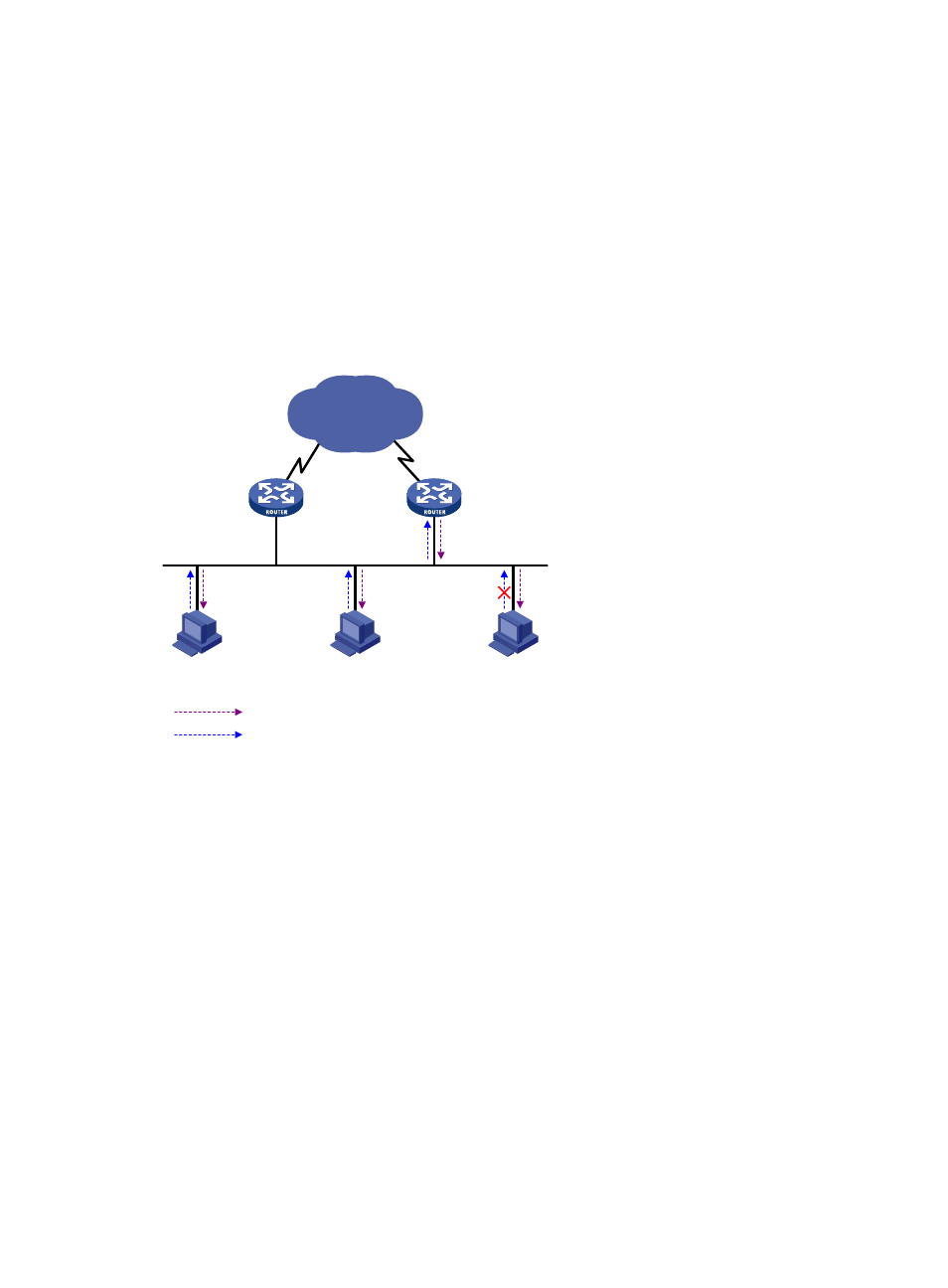Joining an ipv6 multicast group – H3C Technologies H3C S10500 Series Switches User Manual
Page 342

327
1.
Initially, every MLD router assumes itself as the querier and sends MLD general query messages
(often called “general queries”) to all hosts and routers on the local subnet. The destination address
is FF02::1.
2.
After receiving a general query, every MLD router compares the source IPv6 address of the query
message with its own interface address. After comparison, the router with the lowest IPv6 address
wins the querier election and all other routers become non-queriers.
3.
All the non-queriers start a timer called the “other querier present timer.” If a router receives an
MLD query from the querier before the timer expires, it resets this timer. Otherwise, it assumes that
the querier has timed out and initiates a new querier election process.
Joining an IPv6 multicast group
Figure 83 MLD queries and reports
Query
Report
Querier
Host A
(G2)
Host B
(G1)
Host C
(G1)
Ethernet
Router A
Router B
IPv6 network
Assume that Host B and Host C will receive IPv6 multicast data addressed to IPv6 multicast group G1,
and Host A will receive IPv6 multicast data addressed to G2, as shown in
. The following
process describes how the hosts join the IPv6 multicast groups and how the MLD querier (Router B in the
figure) maintains the IPv6 multicast group memberships:
1.
The hosts send unsolicited MLD reports to the addresses of the IPv6 multicast groups that they will
join, without having to wait for the MLD queries from the MLD querier.
2.
The MLD querier periodically multicasts MLD queries (with the destination address of FF02::1) to
all hosts and routers on the local subnet.
3.
After receiving a query message, Host B or Host C (the delay timer of whichever expires first) sends
an MLD report to the IPv6 multicast group address of G1, to announce its membership for G1.
Assume that Host B sends the report message. After hearing the report from Host B, Host C, which
is on the same subnet as Host B, suppresses its own report for G1, because the MLD routers (Router
A and Router B) have already known that at least one host on the local subnet is interested in G1.
This mechanism, known as the “MLD report suppression”, helps reduce traffic on the local subnet.
4.
At the same time, because Host A is interested in G2, it sends a report to the IPv6 multicast group
address of G2.
5.
Through the query/report process, the MLD routers learn that members of G1 and G2 are
attached to the local subnet, and the IPv6 multicast routing protocol (for example, IPv6 PIM) that is
